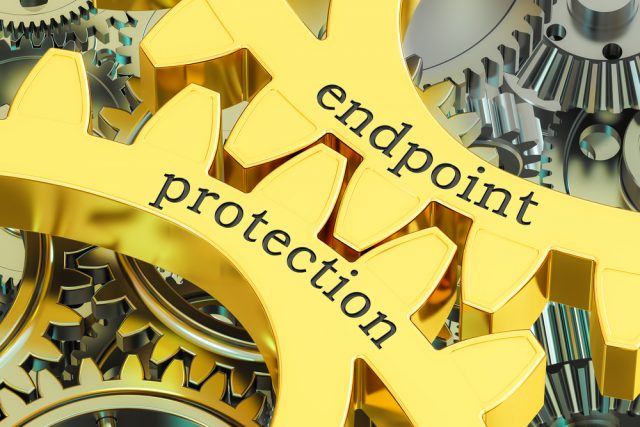How endpoint management can support your cyber resilience strategy

Despite considerable efforts by business leaders to protect their digital assets, in today’s cybersecurity landscape, a security breach is all but inevitable. According to reports, threat actors have already compromised hundreds of millions of records in 2023, and IBM says 83 percent of businesses had more than one breach in 2022. Companies must prepare themselves to respond and seamlessly recover post-attack in this climate and starting at the endpoint could help bolster their cyber resilience.
Endpoint management plays a pivotal role in supporting a robust cyber resilience strategy. By maintaining an up-to-date inventory of all devices connected to your network, endpoint management allows for the rapid identification and isolation of potentially compromised systems, preventing the spread of security incidents and minimizing their impact.
An endpoint management approach to cyber resilience is also supported by principles found in the MITRE Corporation’s Cyber Resiliency Engineering Framework (CREF) Navigator. Their cyber resilience framework focuses on sharing an understanding of what it takes to maintain and inform preparedness and is guided by four pillars. These include:
- Anticipate: The premise of this principle is to maintain a state of readiness. This is where endpoint management shines. By automating the process of patch management and software updates, endpoint management ensures that all devices are equipped with the latest security features, reducing the risk of future attacks. This also means that businesses are always ready to act.
- Withstand: During and after a breach, organizations should be able to continue mission and business-critical functions at all costs. Endpoint management can provide real-time visibility into an organization's network, allowing IT teams to instantly detect, isolate, and remediate security breaches. This means that business critical functions can continue, for the most part, without major disruption, especially in areas of the business that were not affected by a breach.
- Recover: After a breach, it is crucial that mission- and business-critical functions be restored in a timely manner. In the event of a cyber incident, endpoint management tools can identify the affected devices and automate the response, whether that involves limiting a device’s connection to the network, pinpointing which devices may not have their firewall or antivirus active and turning them back on, and applying necessary patches. This allows organizations to limit damage to their digital assets and expedite recovery.
- Adapt: Before moving on from a breach, mission and business functions must be reprioritized to minimize future negative impact. Endpoint management tools also help organizations maintain compliance by ensuring that all endpoints adhere to security policies and standards placed in effect, especially in the aftermath of a breach. After a breach incident, that vulnerability is also logged, analyzed, and proactively guarded in case of repeat attempts from threat actors making it virtually impossible to penetrate again.
Though important and crucial to your cyber resilience strategy, endpoint management should not be your entire strategy. Consider applying the following additional steps to your plan.
Acquire and utilize metrics to inform the functionality and effectiveness of your strategy. According to Osterman Research, 46 percent of senior IT and security leaders lacked the necessary metrics to determine the effectiveness of their team’s resiliency efforts. Moreover, only 6 percent utilized informative metrics like response times, intrusion rates, internal data loss, and incident rates to monitor the performance of their strategy. To prevent and assess performance gaps, collect and analyze metrics about your resiliency protocols and adjust your strategy as needed.
Set up internal checks and balances. Consider having engineering teams and program managers select the most helpful assessment methodologies and metrics to ensure alignment with the goals in your cyber resilience strategy. Organizations should also define and identify metrics (like response times, intrusion rates, internal data loss, etc.) to measure the effectiveness of their resiliency framework. Steps like adding dedicated milestone metrics to fiscal year plans and sharing a progress report on those goals in regular board meetings ensure optimal functionality and buy-in from your teams throughout the year.
Engage everyone in your resiliency strategy. Keeping employees up to date on the types of threats to watch out for (including updates on new threats), techniques criminals might use to access proprietary information, and necessary steps to take to protect business assets all go a long way to support a resiliency strategy -- especially for your endpoint users. Keeping updated cyber threat certifications, investing in cyber security awareness training, and promoting continuous training are great ways to keep your workforce informed on their role in preventing and recovering from a breach. It helps to have an active and engaged community supporting your resiliency goals.
Continue to update your practices and strategy. Businesses cannot use yesterday’s remedies to treat the ailments of today or tomorrow. It is crucial that your resiliency strategy changes in response to the latest information about threats, the tools and techniques used by threat actors, and the availability of innovative mechanisms to counteract malicious advances. The nature of a resiliency plan is as reactive as it is proactive -- extensive planning makes way for swift reactions when the occasion arises.
Cyberattacks are a certainty and having a good cyber resilience plan should be too. Endpoint management tools can play a pivotal role in supporting that plan. With advanced analytics and automation embedded into today’s endpoint management solutions, organizations can benefit from simplified processes that help identify security risks, deploy patches, and expedite updates across all devices. This minimizes the amount of time it takes to respond to incidents. Use these tips and guidelines to ensure your cyber resiliency strategy is on point.
Image credit: AlexLMX/ Shutterstock
Ashley Leonard is CEO and Founder, Syxsense.